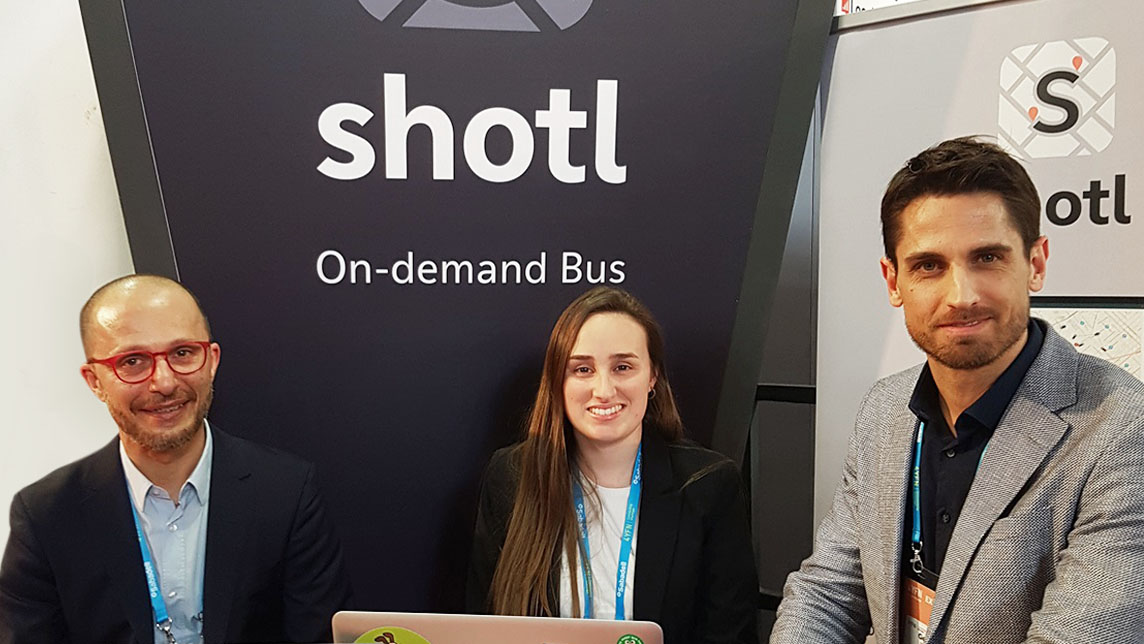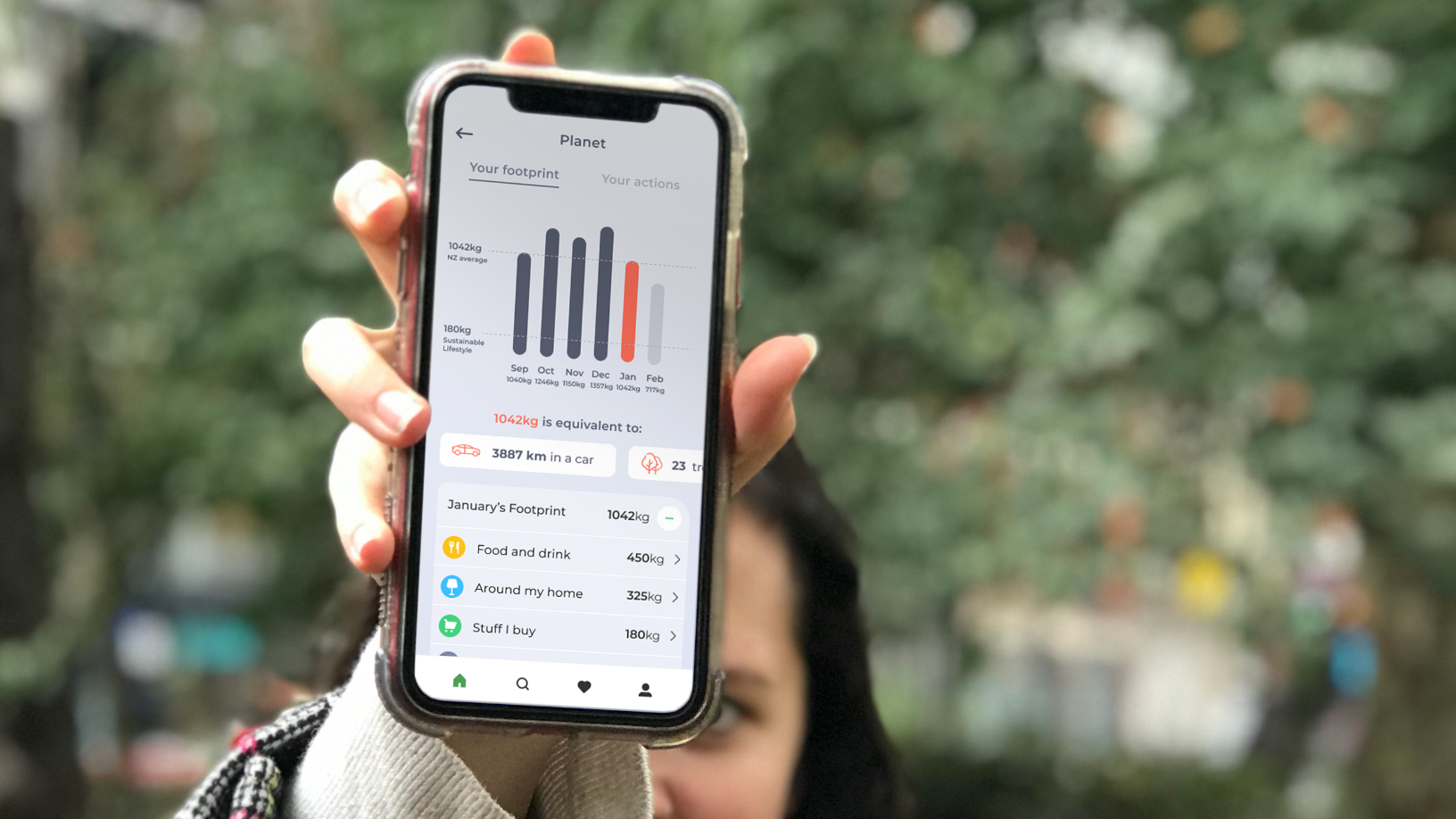Everyone is familiar with Uber or their local version on-demand transportation apps, but the focus is limited to individual travel. Now, a Spanish startup is applying similar thinking to disrupt the public transport sector, using on-demand services to make municipal bus systems smarter while cutting costs and pollution.
Barcelona-based Shotl has launched its on-demand service across continents, including in Battle Creek, Michigan, the US, and a slew of projects in Europe. Its projects are often aimed at those with reduced mobility: in Finland, Spain and Portugal, Shotl has introduced new on-demand bus services in city suburbs and small towns that previously lacked good public transportation connectivity to their nearest city centers.
CompassList interviewed Shotl's co-founder and Chief Communication Officer Gerard Martret at the recent 4YFN conference, where the company was presenting the latest version of its on-demand mobility platform for transport operators and municipalities.
This interview has been condensed and edited for clarity.
Q. Your family has a background in startups, especially within the transportation industry. How did you become involved in this sector?
A. I was working at a chauffeur services company in Barcelona 18 years ago and came up with the idea of a global marketplace for chauffeur transportation via online bookings. I had the idea, but not the will to do it on my own. I spoke with my brother, Oswald, who was working in operations in an explosives transport company. He was very used to providing delicate services – and transporting VIPs is another kind of delicate service – so we decided to partner and launch the company. As it grew, we needed someone to manage the bigger structure. The best person we could think of was our third brother, Igor, because he had been a manager at a big company.
We all have management but not technology backgrounds. Oswald is an engineer so he has more of the mentality of an engineer, or a CTO, and is in charge of the product. I am in charge of business development. Igor is now CEO of our first company, Drivania.
How did the idea for Shotl come about and was it linked to any knowledge of smart city infrastructure?
No, we had to learn. In 2011, Drivania opened an office in the US and we happened to choose San Francisco. We were there when Uber, Lyft and other companies in the new mobility industry were taking off. We saw the impact of these private companies on the overall mobility system.
Were you the first ones to apply this concept to mass transport?
When we conceived the solution back in 2012, we were the pioneers. Now there are many of us, thank God, so there is an industry and we can all change the way that people commute. In the beginning, all we knew was that we could bring more people together in one vehicle if we know where people are and where they want to go. Everybody can share rides because there are many people in the city and there are people going in exactly the same direction pretty much all the time.
How did you ascertain which places were in need of shared mobility services?
There was free data that we could access. Cities like New York, Dubai, Calgary and Washington DC offer free data on the movement of taxis, which we used for simulations to understand if something like this would work. We then developed the technology, and all the data we have now is gathered using the system we built.
How was the technology developed and how long did it take?
It took a long time. It's hard to do it yourself when you are not a coder so we created Caminalab, a startup incubator. This was so that we could externalize innovation and not use Drivania's resources to create a new concept as Shotl is a separate business, and we didn't want to cannibalize the existing one. At first, we used Drivania's resources but it was affecting business. We learned that it was much better to create a new entity to incubate other projects and have people dedicated exclusively to them. Back in 2016, four years after coming up with the idea for Shotl, we had enough resources, connections and knowledge to build a minimum viable product. We hired two people for about a year for that and had a pilot in Barcelona. The results were interesting and the data we got was enough to attract a new investor in 2017.
Can you tell us about the investments in Shotl? Any future requirements?
A total of €1 million has been invested in Shotl. My two partners and I invested €500,000. Another investor, a Spanish public organization called Moventis, invested the remainder. We need to have a small funding round of about €1.5 million in the next months for scaling and product improvement that we are currently negotiating. We don't want to customize or open the possibilities too much because we would lose focus; we have already identified the types of client and the locations we intend to target.
How do you decide where to provide Shotl's services?
The municipalities that pay for our product decide if they want and need a better system because whatever they have today is way too expensive. Any bus service with fewer than 300 passengers a day is very expensive and can be run more efficiently. We can make an educated guess on whether a bus line's ticketing sales is profitable by seeing where it is located and the density of the neighborhood it serves.
How many people typically use your service and is it deployed during times of greatest use, like rush hour?
In very populated areas, you don't want to have an on-demand service during rush hour. You can have a scheduled line running frequently instead because during the off-peak period from 10am to 4pm, even in very populated areas, you can observe empty vehicles running with only one or two passengers. The latter are the best cases for an on-demand service with a smaller vehicle so bigger vehicles can be moved to destinations where they will be needed more.
We don't manage the vehicles or rent them; we use the city's infrastructure. We only license the software and empower municipalities to enhance their service and increase demand.
Do you know how much your customers save by using your services?
We don't have a lot of feedback on saving money – people do not talk about that, but rather how their lives have changed. There are many seniors with limited mobility who now have access to a new type of service that is different from needing a taxi or a family member giving them a lift. Suddenly, they have a more mobile lifestyle and can take transportation on a daily basis to do more interesting things, like seeing friends or visiting places they would not otherwise be able to.
How does the user app work?
The end-user needs to download an app or call our telephone number to request a ride, stating when and from where to where they want to go, like ordering a taxi. We can then select the best vehicle to pick them up. The vehicle is selected through an algorithm that considers every detail, like whether somebody booked the vehicle before you. Every ride has a different value in the algorithm, depending on where the person is and how much in advance they booked. Then we let them know how long it will be until the vehicle picks them up and how long it will take to get to their destination. The platform uses machine learning although we have a plan to build more algorithms and make them more intelligent.
What projects would you like to highlight and which geographical areas are you seeking to expand to?
We are serving small municipalities and neighborhoods because that is where the problems are, but we see huge opportunity in creating new users for public transportation by taking them away from the driving wheel. Our focus right now is to go to places where we can measure the impact of having a flexible transportation system that can change the behavior of people, who are addicted to their cars, at least once a week. It has an environmental benefit as it reduces the volume of traffic in the city, which has a negative impact on our lives that we take for granted. Also, it should not be the case that it takes us much longer to go somewhere during rush hour. We have enough data to move a city like Barcelona using an on-demand service with only 10,000 vehicles.
How does the business model work?
We charge a setup fee and a price per vehicle and are still developing the pricing structure. We are trying to be as affordable as possible, but we know that the competition is doing the same, and that people are willing to pay more. People's monthly budget for mobility is generally from €170 to €300–400. We know how much people are prepared to pay for their mobility and in future, that is something we can aim for.
We think we will break even some time at the beginning of 2020. We have operations in many places and can deploy our services easily without needing to be onsite. Our plans are to reach the corporate market as there are many companies with workers from a large area and they need solutions like ours. Airports, for example, can free up parking spaces for better purposes by having their employees use our service instead of driving to work.
Do you also see opportunities in non-smart cities with terrible transport problems?
In Africa, Latin America, Southeast Asia and most of the world, people are using informal, shared transportation every day and there is no regulation of these services. Today, with a smartphone, we can control how people move. Especially those cities that do not have private cars on a massive scale yet, they still have time to use our service, especially in Asia, in China. Africa is an amazing market but it is not mature enough yet.












